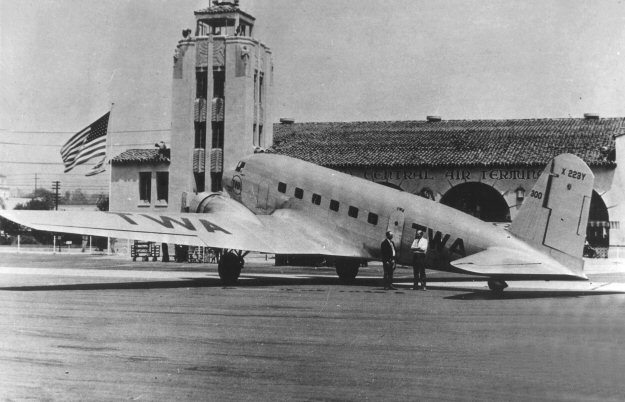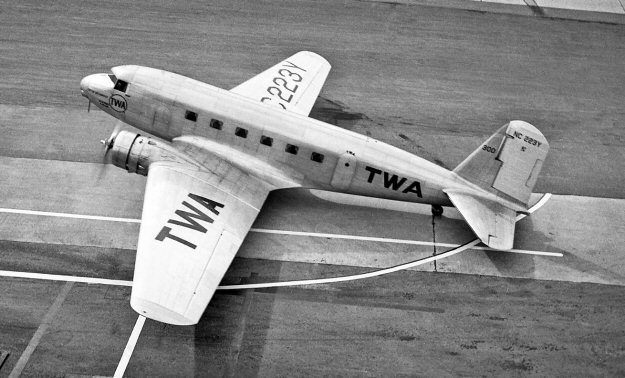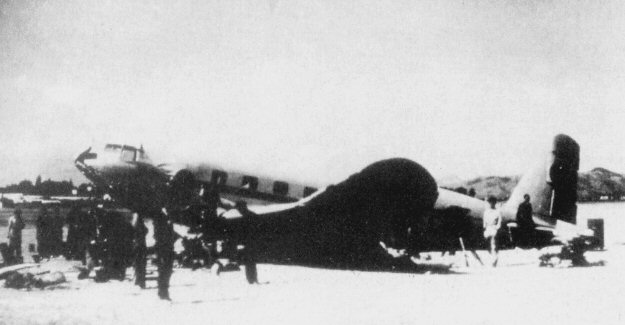Transcontinental
& Western Air Douglas DC-1
X223Y (c/n 1137)

When TWA was looking to update its aging Fords and the
fleet of Fokker Tri-Motors it had inherited
from Western Air Express, it found
itself behind a lengthy queue for the Boeing 247, since United had
beat them to the
punch and ordered sixty of the ungainly looking all metal
airliners. This move effectively
tied up Boeing's
production line for some considerable time, and the law divorcing
aircraft production
from operating
airlines had yet to be put into effect. Jack Frye, TWA's
v-p of operations therefore
issued a specification for
a tri-motor airliner able to carry 12 passengers in soundproofed
comfort and
at a cruising
speed of 146 mph. Donald Douglas, in proposing the DC-1,
convinced Frye that his
criteria could
be met safely with two engines. The DC-1 first flew in July
1933 and was handed over
to TWA in December of
that year. On 19 February 1934, the DC-1, piloted by Jack
Frye, with Eastern
Air Transport's Eddie
Rickenbacker as co-pilot, made TWA's last air mail flight before the
air mail
contracts were canceled by
the government. Leaving Grand Central Union Air Terminal in Los
Angeles
(where the above shot was
taken) the flight landed at Newark, New Jersey (stopping only in Kansas
City
and Columbus,
Ohio) some 13 hours and 4 minutes later. This beat their own ETA
by three hours and
was a
transcontinental record. The DC-1 became the
progenitor of a long line of Douglas transports,
the production
model being delivered to TWA being designated the DC-2. The
one and only DC-1
was sold to Lord
Forbes in the United Kingdom in May 1938, who operated it for a few
months before
selling it in France
in October 1938. It was then sold to Líneas
Aéreas Postales Españolas (L.A.P.E.)
in Spain in November
1938. It was later operated by Iberia from July 1939 with the
name 'Negron'
and registered EC-AAE. As such it crashed
following an engine failure on take-off from Malaga
Airport in
December 1940 and force landed at the end of the runway, never to fly
again. Local rumor
has it that part of the airframe
was used to build a portable alter on which an effigy of the Virgin Mary
is carried around the
City on Holy Days. Ironically, in Spain, the Virgin
Mary is called the "Queen of
the Skies".
With TWA the aircraft was named the "City
of Los Angeles", City of the Angels. An
unconscious
similarity! The rare shot below, taken after the crash, is
courtesy of Joaquin de Caranza
Paris, the
Director of the Malaga Aviation Museum (via the Austin J. Brown
collection).




